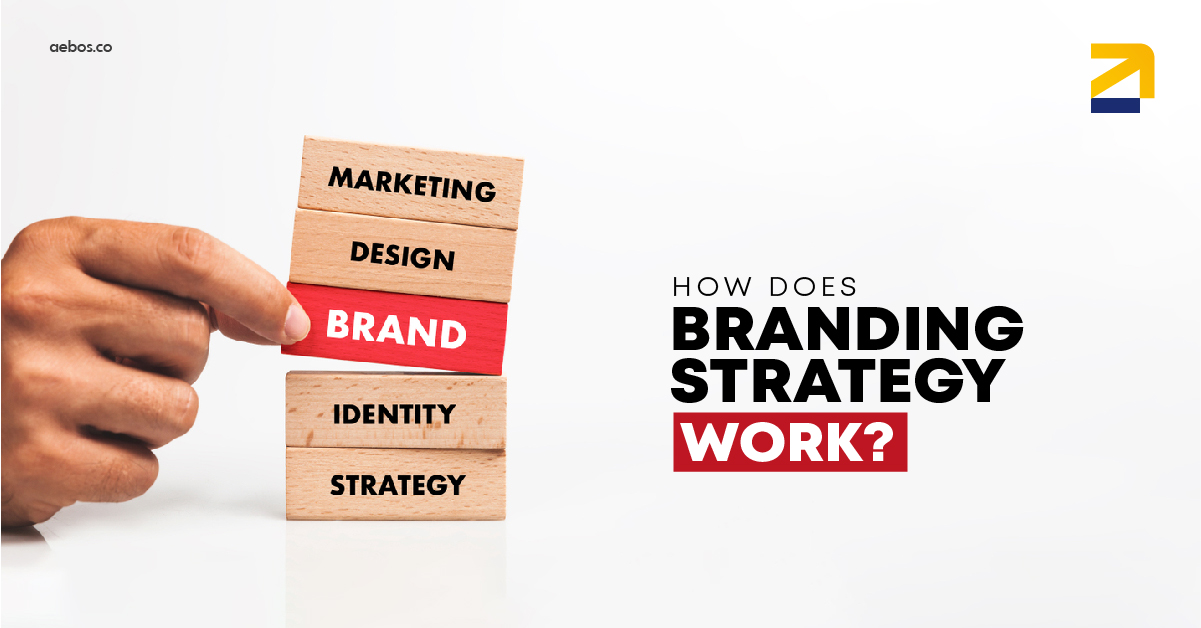
82, 4th Street, Ganesh Nagar,
Ayapakkam, Chennai 600077, India
+91 97909 37369 hello@aebos.co

Great brands like Nike, Airbnb, Redbull, Apple, Levi’s, and Disney all have something in common. You may wonder what it is. It is not a ringing cash register or the abundance of fan following but their clear brand strategies. An impressive brand strategy plus a dedicated team behind these brands is what takes them well clear of all competition.
Though many businesses do not have the size of marketing spends, these brands have to make their branding strategy come alive in the market; every business, regardless of size, can assiduously follow the seriousness these brands bring to their branding strategies.
So here are a few facts on how any aspiring brand can work out an impact strategy to attain their goals.
A brand is not your product, your marketing, or your logo or name; it is, to quote Jeff Bezos, “What people say about you (company) when you are not in the room’. The brand is the holistic reputation of your company. The brand strategy is the business’s goal for how their customers/stakeholders should feel about them. It is also the roadmap to achieve the connection with target audiences on an emotional level. A well-planned and implemented brand strategy can impact all aspects of business and involve consumer needs, emotions, and competitive environments. The idea is that people can copy what you are doing, but can never be what you are.
Today, technology allows consumers to compare all the options available, hence the competition is fierce easily. Brands now compete with not only their competitors but with all the marketing and social media noise around to get your customer’s attention. Brand strategies are not focused on creating good-looking marketing materials. The reason for a business to have a brand strategy is to have a plan in place to work and achieve the pre-set business goals. The goals can range from attracting more customers, getting a better workforce, better customer engagement, and so on.
Successful brand strategies lead to better balance sheets, create more value and help organizations meet business goals. Thus the question now is not whether you need a brand strategy, but can you meet your business goals without a clearly defined brand strategy?
As the saying goes, better late than never. If you are just a start-up business, then you may not have the resources to outsource a brand management agency, but still, you can use various online and offline resources to plan out a strategy on your own. If you are already an established business and looking towards growth, you will again need a unique brand strategy. You may be an existing business and may be looking to achieve a certain goal like better sales, wherein you need to have a better brand strategy.
A well-defined brand strategy will, of course, give you a stronger brand. It will lay the foundation for a good healthy and differentiated brand. It will turn out to be a good sounding board for all your business activities, including marketing. A brand strategy will get all the stakeholders on the same page and help focus on set business goals.
It will provide emotion-based reasons for people to connect with your brand. When people are emotionally attached to a brand that will foster loyalty and in turn growth for the company.
A professionally designed brand strategy will give a blueprint for growing your business. It should include a well-defined and measurable objective; it should have the right voice that talks to your customer. There should be a ‘simple truth’ about your business that can be used as a communication platform. The brand strategy will define the personality of your brand and indicate the positioning for your brand. It should have a documented brand story to set a guideline for the tone of voice. It should have a timeframe for rolling out the brand strategy internally and externally. It should be simple, adaptable and actionable for everyone within the concerned company.
First, you start by understanding the current position of your brand in the market is. Set the goals for your business and understand your customers and competitors.
The second step is to develop the core of your brand, where you actually develop your brand strategy. Here you set your brand goals and ‘simple truth’ and identify the core things you need to bring the strategy to life. Apart from evolving the brand strategy, the stage also involves developing the brand name, brand positioning, brand tone of voice, brand touchpoints, and developing the brand rollout roadmap.
The third step is about strategic thinking and creative articulation of the strategy. It is the stage for developing the brand story and effectively telling it to make an emotional connection with the consumers.
The fourth step involves using the road map to make them connect with the target audience. Start with the company employees and reach them the communication about the brand vision. Plan the rollout of the brand to the market by finalizing the marketing communication and brand promotion activities, including PR, advertising, SEO, promotions, events, guerilla marketing, etc.
The fifth and final step is to measure the effectiveness of your brand communication and adjust it so that you can achieve your business goals. Consistently review the campaign is a vis your measurable objectives